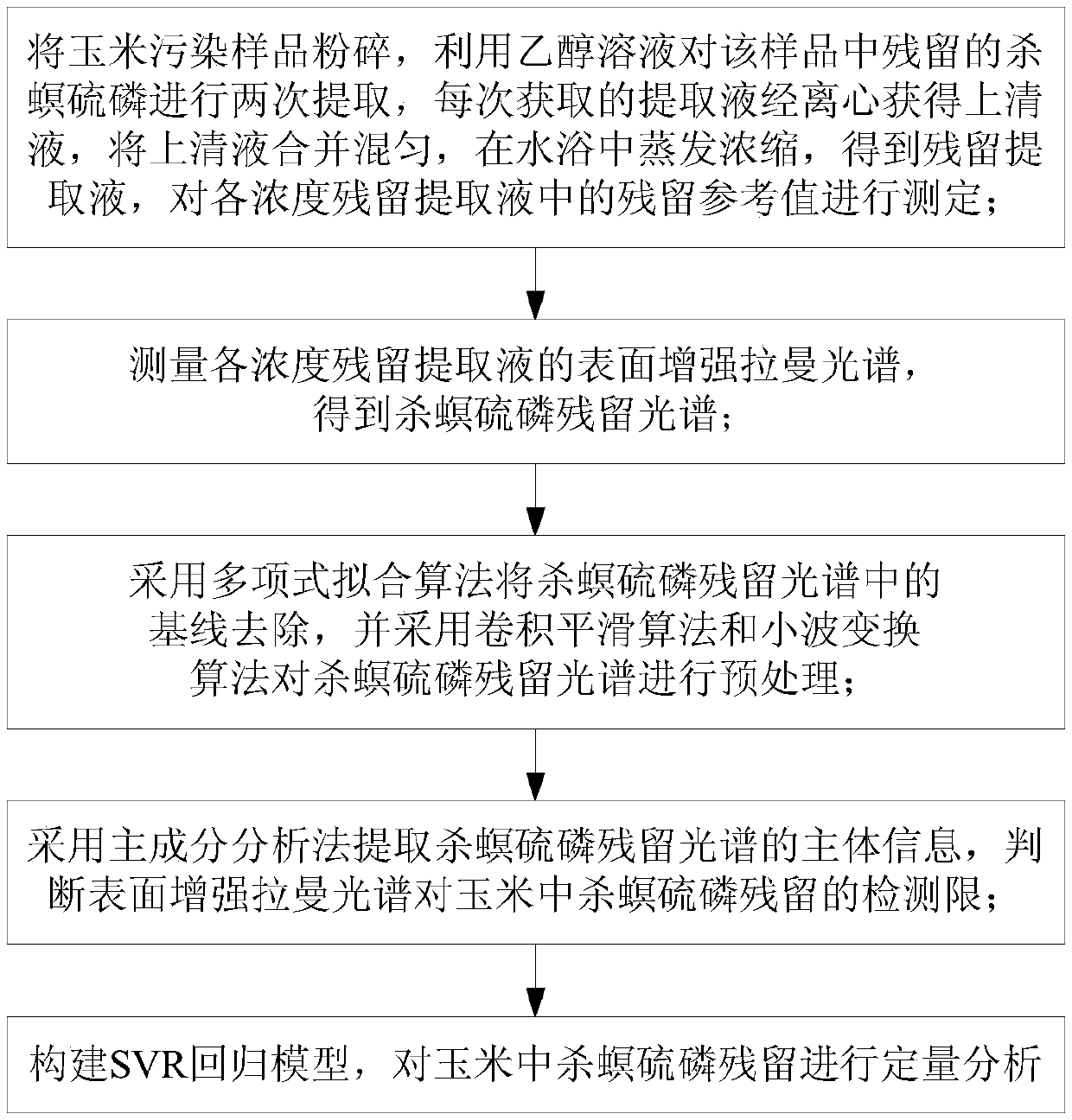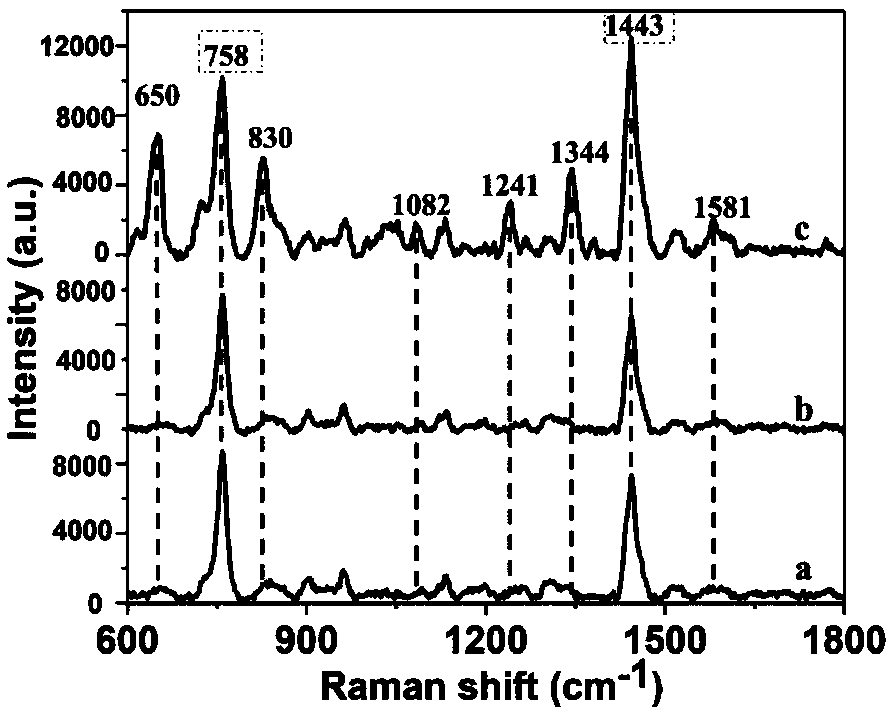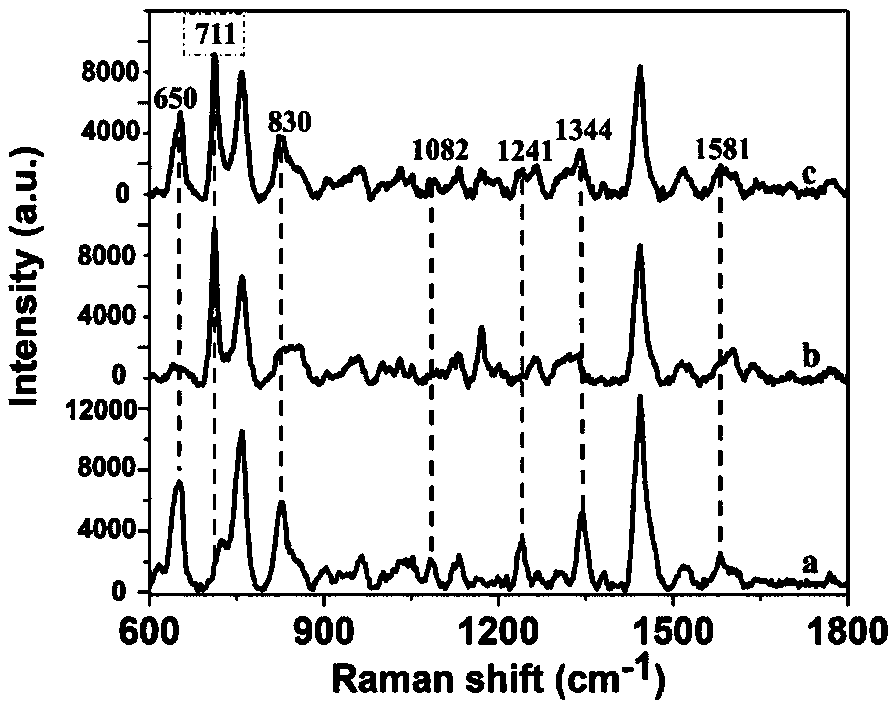Method for detecting fenitrothion pesticide residues in maize based on surface enhanced Raman spectroscopy (SERS)
A fenitrothion and detection method technology, applied in the direction of measuring devices, instruments, and material analysis through optical means, can solve the problems of intervention, pesticide residues, and large consumption of reagents, and achieve accurate detection and reduce interference.
- Summary
- Abstract
- Description
- Claims
- Application Information
AI Technical Summary
Problems solved by technology
Method used
Image
Examples
Embodiment Construction
[0041] The present invention will be further described below in conjunction with accompanying drawing:
[0042] Such as figure 1 Shown a kind of detection method based on fenitrothion pesticide residue in the corn of SERS, this method may further comprise the steps:
[0043] S1. Acquisition of Corn Contaminated Samples
[0044] Dilute the high-concentration fenitrothion solution with 50% ethanol solution to obtain a concentration of 20, 15, 10, 8, 5, 2, 1, 0.5 and 0.4mg / L fenitrothion solution, keep it away from light for subsequent use; A 5 g corn sample was taken, and fenitrothion solutions of different concentrations were added to it to obtain corn contaminated samples with spiked residues of 20, 15, 10, 8, 5, 2, 1, 0.5 and 0.4 μg / g.
[0045] S2, fenitrothion residue extraction
[0046] S21. Crush the corn contamination sample, put it in a 15mL centrifuge tube, add 10mL 50% ethanol, mix evenly with an ultrasonic homogenizer, centrifuge at 4000r / min for 10min, and take th...
PUM
 Login to View More
Login to View More Abstract
Description
Claims
Application Information
 Login to View More
Login to View More - R&D
- Intellectual Property
- Life Sciences
- Materials
- Tech Scout
- Unparalleled Data Quality
- Higher Quality Content
- 60% Fewer Hallucinations
Browse by: Latest US Patents, China's latest patents, Technical Efficacy Thesaurus, Application Domain, Technology Topic, Popular Technical Reports.
© 2025 PatSnap. All rights reserved.Legal|Privacy policy|Modern Slavery Act Transparency Statement|Sitemap|About US| Contact US: help@patsnap.com



